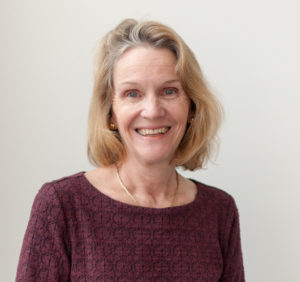 Blogs
Blogs
October 1, 2020 • 4 min read
Twenty-five years ago 50,000 delegates landed in Beijing for the Fourth World Conference on Women, the largest ever global gathering to discuss and advance women’s equality and human rights. It was a lengthy process with lofty ambitions. But what did it achieve?
By Mary Van Lieshout
I was one of over 30,000 civil society delegates at the conference aimed at securing a strong commitment from world leaders on policies to promote and advance women’s rights. In addition, there were 17,000 formal delegates who spent three weeks trying to achieve agreement on the “Beijing Platform for Action” – a set of agreed principles and actions to promote women’s equality to which nation states would sign up. In advance of the conference there was 18 months of preparatory talks with 80% of the actions agreed. The final 20% – the most contentious issues of course – were left to be negotiated in Beijing.
Although non-binding, such UN Action Strategies have an important impact and often strengthen domestic standards and legislation.
While the formal gathering was held in a dedicated conference centre with excellent facilities in Beijing, the gathering of the 30,000 Civil Society delegates was held some miles away in a distant suburb called Huairou. Many of these delegates were not accredited to attend the formal conference, and spent their days at seminars, presentations and workshops discussing the conference progress in large canvas tents in Huairou. It rained continuously while we were there, and on some days the grounds were simply awash in water and mud. Still the tents were always full and often a hotbed of fiery debate as differences emerged across multiple issues including cultures; class; ethnicities and religious affiliations; sexual and reproductive rights, Traveller rights and violence against women.
Hotly contested issues
Also hotly debated were youth issues, including access to education, recognition of the rights of the child, childcare in national accounting and debt cancellation for developing nations. Any presumption that women had a ‘single voice’ was quickly dispelled.
As the Irish civil society delegation sought to ensure we were a ’32 County’ voice, the issue of women in peace building was a particular focus and the Irish Government showed strong leadership in this area both at the Conference and immediately after with its excellent work on UN Security Council Resolution 1325 on Women, Peace and Security.
The final text of the Beijing Platform for Action contained significant commitments to address women’s inequality and was heralded as a success in achieving consensus across such potentially divisive issues as reproductive rights, land ownership and women in conflict resolution. The Platform also included recognition of violence against women as a human rights issue, not a ‘domestic’ issue to be dealt with at the family level.
Key criticisms of the Beijing Platform for Action at the time included its scant recognition of the rights of indigenous communities, and insufficient attention to structural issues such as exploitative trade relations and international management as a driving causes of poverty and inequality in the global south.
Did it solve all our problems? How far have we come?
These questions will be teased out at a high-level United Nations General Assembly meeting in New York on October 1st being held to mark the 25th anniversary of the Beijing Conference with the theme “Accelerating the realisation of gender equality and the empowerment of all women and girls.”
In a recent report UN Women said progress since Beijing has been far too slow and uneven, and warned gender equality is lagging while hard-fought gains are under threat. It said globally progress on women’s access to paid work has ground to a halt over the past 20 years, while women are on average paid 16% less than men, rising to 35% in some countries.
The report concluded that women continue to shoulder the bulk of unpaid care and domestic work, and nearly one in five women (18 per cent) have faced violence from an intimate partner in the past year. New technologies are fueling new forms of violence, such as cyber-harassment, for which policy solutions are largely absent. 32 million girls are still not in school and men still control three quarters of parliamentary seats in the world.
Unfinished business
Every day we witness the unfinished business of Beijing. We’ve seen significant progress on poverty eradication in the past quarter of a century. But big problems remain;
- 12 million girls get married each year before the age of 18 – roughly 33,000 every day, or one every two seconds.
- There are some 650 million women alive today who were child brides struggling with a wide range of attendant health and social problems.
- Women in rural parts of Africa still spend 40 billion hours a year collecting water and the World Economic Forum indicates that it will take another century to close the gender gap.
In a world where multilateral leadership has been seriously undermined this is a challenge. Now 25 years on a renewed global commitment is needed where individuals, states, agencies and indeed NGOs such as GOAL collaborate to reinforce efforts to achieve the promise of Beijing.
Mary Van Lieshout is GOAL’s Deputy CEO, and editor of “A woman’s World, Beyond the Headlines’ a collection of articles published in 1996 by women journalists, development practitioners and academics on the challenges they face in their daily lives.

